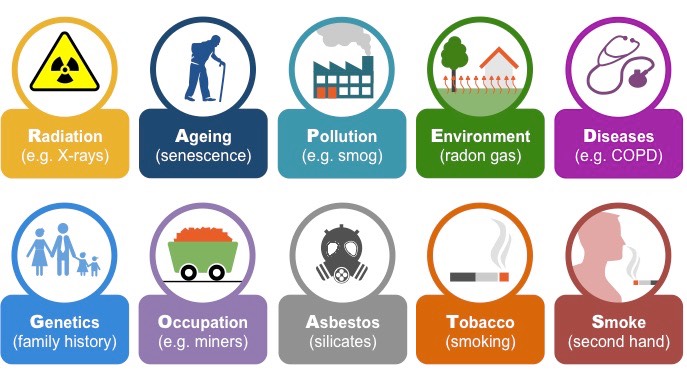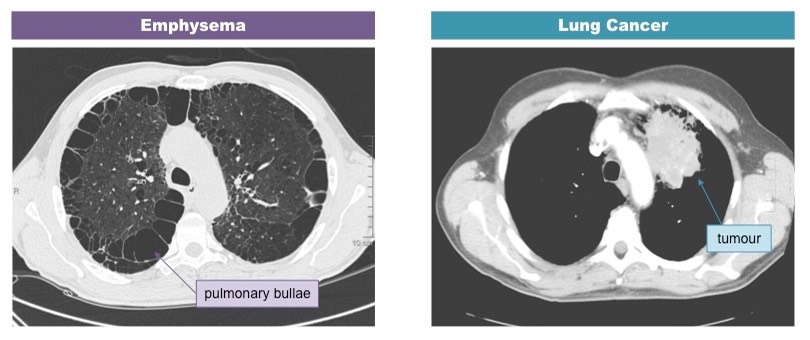![]()
Application:
• Causes and consequences of lung cancer
Lung cancer describes the uncontrolled proliferation of lung cells, leading to the abnormal growth of lung tissue (tumour)
- The abnormal growth can impact on normal tissue function, leading to a variety of symptoms according to size and location
- The tumours can remain in place (benign) or spread to other regions of the body (malignant)
Lung cancers are the most common cause of cancer-related death worldwide for two main reasons:
- The lungs are vital to normal body function and thus the abrogation of their normal function is particularly detrimental to health
- The lungs possess a very rich blood supply, increasing the likelihood of the cancer spreading (metastasis) to other body regions
The common symptoms of lung cancers include coughing up blood, wheezing, respiratory distress and weight loss
- If the cancer mass compresses adjacent organs it can cause chest pain, difficulty swallowing and heart complications
There are many causes for lung cancer, including smoking, asbestos, air pollution, certain infections and genetic predispositions
Common Risk Factors for Lung Cancer

![]()
Application:
• Causes and consequences of emphysema
Emphysema is a lung condition whereby the walls of the alveoli lose their elasticity due to damage to the alveolar walls
- The loss of elasticity results in the abnormal enlargement of the alveoli, leading to a lower total surface area for gas exchange
- The degradation of the alveolar walls can cause holes to develop and alveoli to merge into huge air spaces (pulmonary bullae)
The major cause of emphysema is smoking, as the chemical irritants in cigarette smoke damage the alveolar walls
- The damage to lung tissue leads to the recruitment of phagocytes to the region, which produce an enzyme called elastase
- This elastase, released as part of an inflammatory response, breaks down the elastic fibres in the alveolar wall
- Elastase activity can be blocked by an enzyme inhibitor (α-1-antitrypsin), but not when elastase concentrations are increased
- A small proportion of emphysema cases are due to a hereditary deficiency in this enzyme inhibitor due to a gene mutation
Common symptoms of emphysema include shortness of breath, phlegm production, expansion of the ribcage, cyanosis and an increased susceptibility to chest infections
Consequences of Emphysema

Visualisation of Lung Disorders Using CT Scanning

